The wonderful properties of spider silk mean it can find applications as diverse as tissue transplants and training shoes. Anthony King spins a web of wonder
After years of basic research and exciting promises, spider silk is poised to enter the web of consumer products. Startup companies are in ebullient mood, promising to synthesize tonnes of spider silk proteins. Some show off synthetic silk in prototype footwear, clothing and cosmetics; others bet its properties will better suit biomedical devices, drug delivery systems or tissue transplants.
Spider silk stands out for its extreme mechanical properties. It is the fibre that can absorb the most energy before it breaks, due to a combination of tensile strength and extensibility. It can absorb three times more energy than Kevlar before breaking. ‘It’s not the strongest and it is not the most elastic material, but it’s the best material at combining these features,’ says Thomas Scheibel, professor of biomaterials at Bayreuth University in Germany, who was driven by the skepticism he met on entering the field.
‘Everyone was pessimistic,’ explains Scheibel. ‘15 years ago, there were maybe five to 10 groups working on spider silk and almost no companies. Now there are a few dozen groups and at least three nicely running biotech companies.’ Researchers have unraveled the mysteries of how spiders spin their silk and what is special about its composition, but alongside basic science researchers are seeking novel applications, ranging from nerve regrowth to consumer packaging and glue. Its lure is not simply toughness: spider silk does not appear to cause a strong immune, allergic or inflammatory reaction and it biodegrades to harmless end products, all especially useful in biomedicine. Crucially, as a recombinant protein, researchers have been sticking bioactive molecules onto it, for added functionality.
Lead companies are AMSilk in Germany, Spiber in Japan (not to be confused with Spiber Technologies in Sweden) and Bolt Threads in California, all founded around 2008–09. Scheibel says eight to 12 years is the average time it takes for a chemical company to develop and get a new material approved. ‘Why should it be faster with silk?’ His pursuits led him to found AMSilk, a private startup that proudly boasts itself as the world’s first industrial supplier of synthetic silk biopolymers produced using a patented biotechnological process.
Cosmetics to bioshields
There will be no spiders at work in industrial silk plants. Instead transgenic organisms hosting spider silk genes will churn out silk proteins; mostly bacteria and yeast producing slimmed down, tailored versions of the materials . There are also spider-silk goats, alfalfa plants and mammalian cells. AMSilk uses fermentation vessels of E. coli: the bacterial cells are broken open to release the protein, which is separated out and processed to white powder. This can be refined as silk beads or made into silk hydrogel, the latter being AMSilk’s top selling product.
‘We are selling into the cosmetics ingredients field at the tonne scale of production, and there are now more than 20 cosmetic products being introduced to market by our customers,’ explains Jens Klein, chief executive of AMSilk since 2014. Silk-based cosmetics can coat the skin with a silky texture and form a breathable skin barrier. ‘Potential customers are formulating anti-pollution creams. You might put it on in the morning in Shanghai to protect your skin,’ says Klein, who says Korea is an early market, though there are also products available in Germany and Switzerland. Unlike microbeads, the silk particles biodegrade and come from a sustainable resource. It might be marketed as vegan silk, an alternative to boiling silkworms alive.
‘Industrial biotech offers a clean process, with the same quality each time,’ says Klein. The dependable quality is a perk in terms of biomedical products, but more importantly, silk does not trigger an immune response and the surface is difficult for microbes to colonise. The special properties are owed to its amino acid sequences. A spider silk fibre is made mainly of proteins (spidroins) that consist of repetitive core regions flanked by non-repetitive folded amino and carboxy-terminal domains. Often more than half the sequence is made up of glycines.
‘The point with glycine is that its side chain is just hydrogen, so the possibility of doing chemical interactions with it are low,’ says Scheibel. This offers one explanation for why cells don’t bind there and why recombinant spider silk is being sprayed or dip-coated onto medical devices to act as a bioshield. ‘If you check the surface of silk fibres, you find that the surface is mostly glycines presenting hydrogens. Other amino acids are typically inside the structure.’
Scheibel has coated catheters made of polyurethane, polyethylene and polystyrene, and metals and ceramics used for implants. He reported that the use of AMSilk spider silk coating reduced the rate of major complications after silicone implant surgery.1 A medical collaborator said the protein coating can significantly improve medical outcomes after the use of silicone implants in reconstructive and aesthetic breast surgery.
AMSilk has been working on other commercially available products, depositing a micron-thick layer. ‘We finished preclinical studies and the next step is for one of our partners to start clinical development,’ says Klein. The coatings, he says, resist bacterial attachment better than Teflon and steel.
Growing tissue
In Sweden, Spiber Technologies places a portion of spider silk gene sequences into E. coli bacteria and makes recombinant proteins around one-tenth the size of spider proteins. It converts the proteins into fibres by bundling together silk threads the proteins can also be used to create a mesh or to make foams. ‘It is 100% silk. No special machinery is needed and we don’t add reagents,’ says My Hedhammar, Spiber founder. The company is still in discovery phase, making recombinant protein in gram quantities.
Spiber is targeting stem cell culturing, bone reconstruction and wound healing. It has used its recombinant spider silk to build matrixes for culturing mammalian cells. Last year it added a binding motif found in the glycoprotein fibronectin and reported that it led to increased attachment by human skin cells.2 Research has shown that cells adhere better to the extracellular matrix when such receptors are present.
Spider silk is potentially very attractive for use in regenerative medicine
Typically, cells are cultured on flat surfaces, but ‘the importance of giving cells a 3D environment is becoming clearer, especially for cell differentiation’, says Hedhammar. ‘In our case we can incorporate bioactive cues into the silk to help fool cells into thinking they are in tissue.’ This makes for realistic tissue models for drug testing, but could also allow for spare tissue parts to be grown for patients.
Transplantating pancreatic islets is one approach for treating diabetes. Hedhammar has successfully used a silk matrix with cell binding motifs to support human islet cells in vitro for over three months.3 ‘Our main aim was to provide a 3D matrix so they were alive and would respond to glucose stimulation with insulin production,’ says Hedhammar. ‘What we didn’t expect was proliferation of the cells.’ The tissue became more vascularized and expanded over time,4 which would be critical for successful transplantation in the body. Spiber is investigating potential transplants to the eyes of diabetic patients.
Anna Rising’s lab at the Karolinska Institute in Sweden is using an ex vivo model to look at how human spinal cord tissue can regenerate in the presence of spider silk. Previous research showed that sliced peripheral nerve tissue from sheep unexpectedly bridged a 6cm gap with spider silk as a guide.5 ‘Spider silk is a potentially very attractive material for use in regenerative medicine,’ says Rising. ‘The idea is that spider silk amino acid sequences are so repetitive and mostly composed of small, rather non-polar residues that they go under the radar in terms of immune surveillance,’ Rising adds.
Processing silk proteins
Spider silk fibres are formed from a highly concentrated protein solution (dope) in spiders; a female spider can spin up to seven types for a variety of purposes. Rising’s group recently reported a recombinant silk protein which had both carbon and nitrogen terminals as well as repetitive sequences. Most synthetic proteins are much smaller than natural spider proteins and do not have both terminals. ‘It remains to be seen whether the end domains are critically important, though for the spider they are,’ says Randy Lewis, materials scientist at Utah State University in the US. He and Scheibel argue we do not have to exactly replicate spider silks to make the materials we need. He takes advantage of nature’s palette and has synthesized silk based on seven different silk genes.

Some lab-based methods rely on a powerful and toxic solvent (hexafluoroisopropanol) to break apart the proteins, which would be less than ideal in consumer industries as it is incredibly expensive and very hazardous according to David Breslauer, cofounder of Bolt Threads. But Lewis has reported a method to solubilize spider silk proteins straight into an aqueous solution using a combination of heat and pressure.7 The method achieved 100% solvation and recovery of the protein using a conventional microwave oven, he says. Companies have their own processes and seek to minimize strong solvents.
A regular lab process uses salts to denature proteins and then realign them in a stretch bath in alcohol. ‘We see increased tensile strength of a factor of 50 or more and increases in elasticity 20-fold,’ says Lewis, as beta sheets form and up to 85% fibre alignment is achieved. Threads can then be spun, usually 8 or 24, for a fibre big enough for commercial processes. His commercialization strategies focus more on non-fibre applications such as coatings. ‘A kilo of spider silk protein could coat on the order of a million to 10 million catheters and our coatings could include antibiotics or anticlotting factors,’ says Lewis. He hopes to do animal testing by the end of the summer and have some sort of coated material approved by the FDA within five years.
Strong advantage
But spider silk is not all about biomedicine. Dragline silk of spiders has the best combination of strength and elongation. ‘I joke that you could make a bulletproof vest out of it that could stop a bullet, but it is going to stop on the wrong side of your chest,’ says Lewis. The stretch is what separates it from Kevlar or carbon fibre composites, which have little give. Lewis’ lab is investigating recombinant silk in composite materials, added for example to carbon fibre perhaps to give enough flex in car body panels or drone wings. He also created an adhesive ‘over 10-fold stronger than Gorilla Glue in terms of energy needed to break wood apart’. This would be useful in high-end applications, such as surgical glue or for satellites. Scheibel combined spider silk protein with nanoclays to make a composite that could block gas and water vapour, making it a suitable candidate as a food packaging materia.8b It is produced without toxic additives in a water-based process and it is transparent and biodegradable.
Many of the engineering applications Lewis is considering rely on prototypes made with silk from a herd of 40 transgenic goats. The best goats produce around 4g of silk per litre of milk. His lab also runs two 500-litre fermentation tanks with E. coli, yielding hundreds of grams of protein per week, and is working on improving extraction efficiency. ‘We are making sure we can produce enough materials to make prototypes,’ says Lewis, whose goal is to generate a kilogram per week. He is also talking to a company that puts monitoring equipment into wells and struggles with biofouling. A spider silk film, from microns to millimetres thick, would be optically clear and extend the life of the equipment.
Spider silk clothing
One other advantage of spider silk is that it does not melt. This is why the US Army is interested in it as a replacement for nylon. ‘When blasts have occurred, nylon from garments melts onto the skin. The advantage of spider silk is that it chars,’ explains Lewis. He is skeptical that spider silk will ever be cost-competitive enough to make into ordinary clothes. However, two companies have garnered attention by announcing the use of spider silk in consumer clothing.
A prototype parka from outdoor equipment makers North Face made from recombinant spider silk generated much publicity at its launch in September 2015. The silk was made by a Japanese startup, Spiber. The company says the product will be available in 2017. Spiber strives to reduce the cost of silk protein to below $100 per kilogram (£80), and notes that conventional wisdom pegs $20–30 as critical for mass adoption of a material, but hints $10 should be feasible. Spiber is not alone in racing to clothe us in synthetic spider silk.
Bolt Threads is a California-based biotech founded in 2009 that last year raised $50 million in funding. It is partnering with sustainable outdoor clothing company Patagonia to supply spider silk fibre. ‘We are going into the hundreds of thousands of litres scale of production, going towards metric tonne quantities of silk fibre,’ says David Breslauer, cofounder of Bolt Threads. His company uses recombinant yeast. ‘Yeast is such a well-studied set of organisms. Think of the giant brewing factories for alcohol – we’ll have that but for silk,’ he adds. He credits the early wave of biofuel companies that sought to use industrial biotechnologies to make a commodity product. ‘They had to push the boundaries, eke out efficiencies and get economies of scale. We learnt from them.’
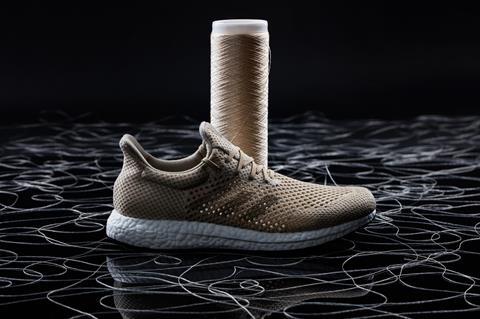
Bolt Threads says consumers will be able to wear its spider fibres in 2017, using contract manufacturers to make the protein. Breslauer says the big push has been to figure out purification and processing without lab solvents but with cost-effective and safe chemistries. He too is tight lipped about how they’ve solved this problem, but notes that hexafluoroisopropanol has no part to play. Bolt Threads won’t disclose its cost of production, but Breslauer says the target is to compete with silkworm silk, which fluctuates around $70–80.
AMSilk in Germany makes a fibre, Biosteel, wholly from its silk proteins. The company believes it will find its way into footwear and clothing, as well as automotive and aviation interiors. Adidas last year showed off a sports shoe with an upper made entirely of the Biosteel fibre.
In two to three years, consumers will be able to choose between spider silk outdoor clothing products, paying top dollar for the privilege, and pick up cosmetics with recombinant silk proteins. Progress will continue on coatings for biomedical devices and scientists will push forward in using silk to culture tissue and for sustained drug delivery. We may not be able to walk on the ceiling or cast webs like superheroes, but we’re a step closer to harnessing the spider’s real supermaterial.
Anthony King is a science writer based in Dublin, Ireland
References
1 P H Zeplin et al, Adv. Func. Mater., 2014, 24, 2658 (DOI: 10.1002/adfm.201302813)
2 M Widhe, N D Shalaly, M Hedhammar, Biomaterials, 2016, 74, 256 (DOI: 10.1016/j.biomaterials.2015.10.013)
3 U Johansson et al, PLoS One, 2015, 10, e0130169 (DOI: 10.1371/journal.pone.0130169)
4 N D Shalaly et al, Biomaterials, 2016, 90, 50 (DOI: 10.1016/j.biomaterials.2016.03.006)
5 C Radtke et al, PLoS ONE, 2011, 6, e16990 (DOI: 10.1371/journal.pone.0016990)
6 K Schacht et al, Angew. Chem. Int. Ed. 2015, 54, 2816, (DOI: 10.1002/anie.201409846)
7 J A Jones et al, Biomacromolecules, 2015, 16, 1418 (DOI: 10.1021/acs.biomac.5b00226)
8 S Gomes et al, J. Tissue Eng. Regen. Med., 2012, 6, 356 (DOI: 10.1002/term.437)
8b E Doblhofer et al, ACS Appl. Mater. Interfaces, 2016, 8, 25535 (DOI: 10.1021/acsami.6b08287)
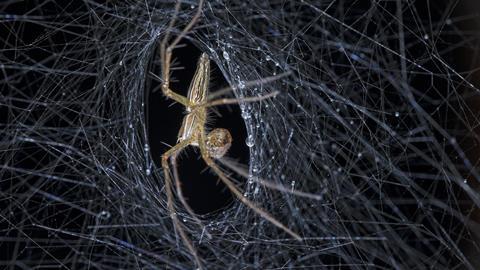
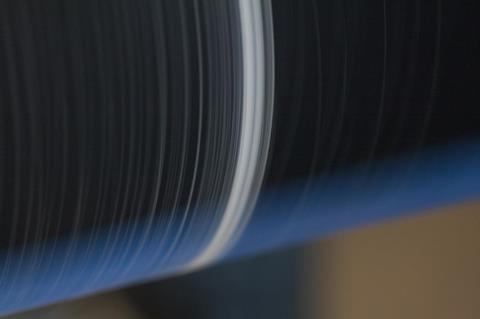

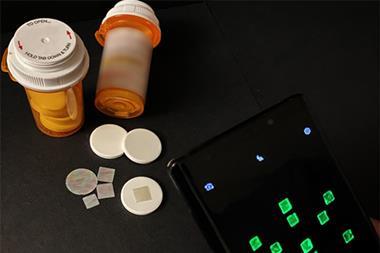
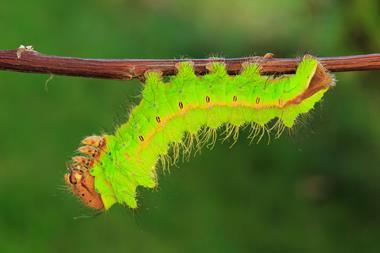









No comments yet